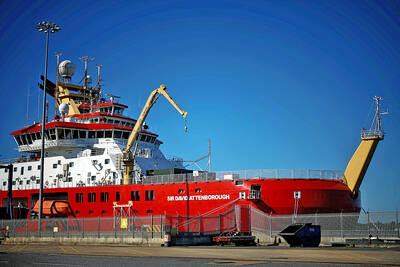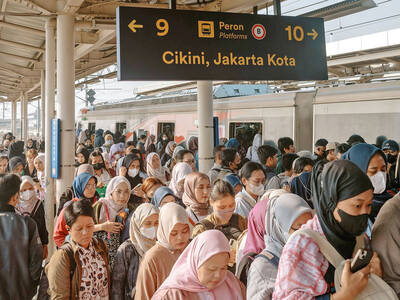Fifteen Turkish soldiers and 23 Kurdish rebels were killed after an audacious rebel attack on a military post near the Iraqi border, which prompted a crushing military air and ground response, an army spokesman said yesterday.
Two other soldiers remained unaccounted for after Friday’s attack on the border station in Semdinli Town in Hakkari Province, General Metin Gurak, the head of the general staff’s press department told the Anatolia news agency.
Kurdistan Workers’ Party (PKK) rebels launched the assault on the base — where a company of paramilitary soldiers were based — under cover of heavy weapons’ fire from bases in northern Iraq.
“Most of our losses were caused by heavy weapons’ fire from the north of Iraq,” Gurak said.
Turkish forces responded with artillery fire and attack helicopters pounded rebel positions while additional forces were dispatched to the area, he said.
Turkish fighter jets and artillery units also struck at a group of rebels in the north of Iraq, about 10km from the station under attack, Gurak said.
“Twenty-three terrorists were neutralized in the clashes. It is not yet clear how many terrorists were killed by artillery fire and in the strikes by the air force,” he said.
The fighting also left two soldiers with heavy injuries, he added.
Friday’s attack comes a day after the end of a three-day ceasefire the PKK announced for Id-al-Fitr, the Muslim festival marking the end of Ramadan, the holy month of fasting.
The PKK — considered a terrorist group by Turkey, the US and the EU — has been fighting for a separate state in the mainly Kurdish southeast of Turkey since 1984.
Turkey claims that thousands of PKK militants are holed up in rear bases in the autonomous Kurdish north of Iraq from where they stage cross-border attacks on Turkish targets.

STEPPING UP: Diminished US polar science presence mean opportunities for the UK and other countries, although China or Russia might also fill that gap, a researcher said The UK’s flagship polar research vessel is to head to Antarctica next week to help advance dozens of climate change-linked science projects, as Western nations spearhead studies there while the US withdraws. The RRS Sir David Attenborough, a state-of-the-art ship named after the renowned British naturalist, would aid research on everything from “hunting underwater tsunamis” to tracking glacier melt and whale populations. Operated by the British Antarctic Survey (BAS), the country’s polar research institute, the 15,000-tonne icebreaker — boasting a helipad, and various laboratories and gadgetry — is pivotal to the UK’s efforts to assess climate change’s impact there. “The saying goes

FRUSTRATIONS: One in seven youths in China and Indonesia are unemployed, and many in the region are stuck in low-productivity jobs, the World Bank said Young people across Asia are struggling to find good jobs, with many stuck in low-productivity work that the World Bank said could strain social stability as frustrations fuel a global wave of youth-led protests. The bank highlighted a persistent gap between younger and more experienced workers across several Asian economies in a regional economic update released yesterday, noting that one in seven young people in China and Indonesia are unemployed. The share of people now vulnerable to falling into poverty is now larger than the middle class in most countries, it said. “The employment rate is generally high, but the young struggle to

ENERGY SHIFT: A report by Ember suggests it is possible for the world to wean off polluting sources of power, such as coal and gas, even as demand for electricity surges Worldwide solar and wind power generation has outpaced electricity demand this year, and for the first time on record, renewable energies combined generated more power than coal, a new analysis said. Global solar generation grew by a record 31 percent in the first half of the year, while wind generation grew 7.7 percent, according to the report by the energy think tank Ember, which was released after midnight yesterday. Solar and wind generation combined grew by more than 400 terawatt hours, which was more than the increase in overall global demand during the same period, it said. The findings suggest it is

FIRST STAGE: Hamas has agreed to release 48 Israeli hostages in exchange for 250 ‘national security prisoners’ as well as 1,700 Gazans, but has resisted calls to disarm Israel plans to destroy what remains of Hamas’ network of tunnels under Gaza, working with US approval after its hostages are freed, it said yesterday. Israeli Minister of Defense Israel Katz said that the operation would be conducted under an “international mechanism” led by the US. “Israel’s great challenge after the hostage release phase will be the destruction of all Hamas terrorist tunnels in Gaza,” Katz said. “I have ordered the army to prepare to carry out this mission,” he added. Hamas operates a network of tunnels under Gaza, allowing its fighters to operate out of sight of Israeli reconnaissance. Some have passed under